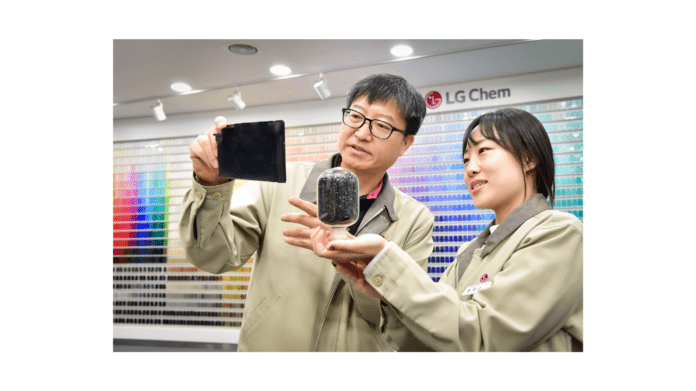LG Chem announced today that it has developed a new plastic product for battery application that is capable of preventing the spread of flame in batteries, delivering the longest fire-resistance performance in the world.
LG Chem’s flame-retardant engineering plastic product is able to prevent the spread of flames, thanks to the company’s proprietary technology and manufacturing methods. The new advanced flame barrier product created by LG Chem is a highly functional engineering plastic product made from various composites including polyphenylene oxide (PPO) and polyamide (PA) resin.
“We are proud to present this new product, a significant milestone for us after more than 10 years of dedicated research to deliver innovation for our customers,” said Steven Kim, Senior Vice President of Engineering Materials Division at LG Chem. “LG Chem continues to lead the rapidly evolving e-Mobility market, and we will continue to lead innovations through consistent R&D and investments in manufacturing based on our world-class chemical compounding technology.”

When used in battery components, the new product is resistant to flames for a longer period of time due to its superior properties. It also features excellent dimensional stability and maintains its shape under changing temperature conditions. During LG Chem’s testing, the product was able to prevent the spread of flames caused by thermal propagation for over ten minutes at 1,000°C, 10 times longer than general plastics.
Thermal runaway is the leading cause of EV battery fires, where various stressors can cause heat to build up within a battery cell. When a battery cell exceeds its temperature threshold, fire can occur due to a short circuit triggered by factors such as overcharging and over-discharging. The resulting fire is difficult to extinguish as lithium reacts violently with water. Application of LG Chem’s new engineering plastic product to battery components would benefit drivers and passengers, giving them more time to evacuate a vehicle in case of a damaged and overheating battery.
Commercial production of the new product is on target to begin in 2023 aligned with customers’ demands and schedules. The company is currently in the process of obtaining patents in Korea, the United States and selected European markets.






